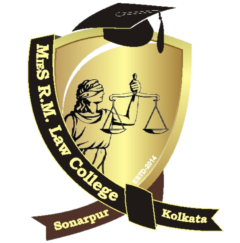DEMOCRACY IN INDIA: PARLIAMENTARY OR EXECUTIVE
An article on “Democracy In India: Parliamentary or Executive” has been written by Priyanka Barik of MIES R M Law College, which is one of the best law colleges in West Bengal. Law is one of the most relevant and professionally viable career options today. Because it affects almost every aspect of our daily lives. Recognizing the law’s impact on people’s lives is critical, MIES RM Law College, set up one of the best modern equipped premier Law College in Sonarpur, South Kolkata.
MIES R M Law College, Kolkata has completed many years with its brilliant journey providing the best Indian Law Education possible to future lawyers, advocates, and law officers. MIES RM Law College conducts High Court and Supreme Court / Apex court visits for its Students. This College is one of the topmost renowned Law Colleges in India under Vidyasagar University and is approved by the Bar Council of India.
INTRODUCTION
‘Everything has been said before, but since nobody listens we have to keep going back and beginning all over again’ – French author Andre Gide
This blog writing will analyze the state of democracy in India – whether it is parliamentary or executive. As per the Constitution of India, India is a parliamentary form of democracy. But, is it so keeping the present scenarios in mind? The blog will discuss whether the executive is dominant in the temple of democracy i.e., the Parliament. Is it better to say that India is an Executive Democracy and not a Parliamentary Democracy? How to prevent such deviation from the parliamentary form of democracy? All these will be discussed below in detail.
DEMOCRACY
A form of government that enables the people to exercise political will limits the power of the head of state. Also, enhances the protection of natural rights and civil liberties, and provides for the separation of powers between governmental entities is termed a democracy. In practice, democracy takes many different shapes. The two most common types of democracies prevailing in our world are direct and representative. The other variants of democracy such as constitutional, liberal, parliamentary, participatory, pluralist, and socialist democracies can be found in practice in different nations today.
For example, In 2018, a total of 96 out of 167 countries (57%) with populations of at least 500,000 were democracies of some sort. Statistics show that the percentage of democracies among the world’s governments has been increasing since the mid-1970s, currently standing just short of its post-World War II high of 58% in 2016[1].
PARLIAMENTARY DEMOCRACY IN INDIA
A parliamentary system is a type of democratic governance of a nation in which the executive branch derives its democratic legitimacy from, and is held accountable to, the legislature i.e., the Parliament; this showcases the interconnection between the executive and the legislature. In a parliamentary system, the head of state is normally a different person from the head of government. It is in contrast to a presidential system in a democracy, where the head of state often is also the head of government. And most importantly, the executive branch does not derive its democratic legitimacy from the legislature[2].
According to Bryce “Democracy really means nothing more or less than the rule of the whole people, expressing their sovereign will by their votes.”
The democratic setup in India
The parliamentary democratic government elected by the Indian citizens is the largest one. The Indian Constitution provides for a parliamentary form of democracy. The democratic setup in India was established when the Constitution of India came into effect on 26th January 1950. Parliamentary democracy prevailing in India reveals that for choosing representatives through the elections. Every Indian citizen has the right to vote without any discrimination irrespective of caste, creed, race, religion, region, and sex. The four principles on which the democratic government of India is established are equality, liberty, fraternity, and justice. In India, there exists a federal form of government i.e. there is a union government ruling at the centre and there is a state government in the states.
The government i.e. at the center and the state abide by the democratically elected government respectively and the parliament’s two houses i.e., the Rajya Sabha and Lok Sabha. The Indian president (the official head of the Indian Republic) is chosen by the two governments i.e., the union and the state. The beginning of the democratic system was put forward when the election was held for the first time, to say more precisely when the first government to power was decided by the citizen’s vote.
The Indian elections held in the 1950s for the first time were considered to be one of the biggest experiments in the world’s democracy. Based on the universal adult franchise the elections were conducted, according to the universal adult franchise, the citizens of India who are 18 years or above 18 years have the right to vote and form government irrespective of their religion, culture, creed, sex, region, and caste[3].
CHALLENGE TO INDIAN DEMOCRACY
However, the Parliamentary form of democracy is under threat. There has been an increasing dominance of the executive in the day-to-day affairs of Parliamentary affairs. A big example of this can be the exclusion of the President of India, the titular head of the executive from the inauguration of the new Parliament building of the world’s largest democracy. To many political analysts, this is a subordination of the Indian Parliament in India’s Parliamentary democracy and the increasing domination of the executive. A few more examples can be the passing of bills with minimal or absolutely no debate and deliberation, sitting of the Parliament for a lesser number of days and the adjournment of the Parliamentary sessions, the increasing prevalence of Presidential ordinances in the law-making of the country[4].
According to Gautam Bhatia, a Delhi-based lawyer the growing irrelevance of Parliament is not because of individual actions but a matter of our constitution. In other words, the Constitution of India, by its very nature and format, enables and facilitates the marginalization of the largest institution of Indian democracy i.e the Parliament, and the concentration of power within the hands of a dominant executive.
You must be wondering how does this happen. Here are the instances.
- Intra-Party Dissent: The anti-defection law, enacted through the Tenth Schedule to the Constitution in 1985, suppresses intra-party dissent by disqualifying members who defy the party whip. Despite this intention to curb unprincipled floor-crossing and horse-trading, this law has reinforced the power of party leadership, particularly the executive, while making intra-party dissent more difficult due to the risk of disqualification from the Indian Parliament.
- Limited Scope for Opposition: Unlike other parliamentary democracies across the globe, the Constitution of India does not allocate specific space for political opposition in the Houses. As a result, to a great extent, the proceedings inside the parliament are under the control of the executive, leaving no constitutional checks on how that control is exercised. This diminishes the opposition’s ability to hold the executive accountable.
- Partisan Speakers: The Speaker of the Lok Sabha, who should be an impartial authority representing the interests of the Parliament, often acts in a partisan manner.
- Underestimating the Role of the Upper House: The Rajya Sabha’s (Upper House) role is further undermined by the misclassification of bills and the constitutional power to issue ordinances. Ordinances that are meant for emergencies when Parliament is not in session are increasingly used as a parallel process of law-making, bypassing the scrutiny of the Upper House and once again concentrating power within the hands of the executive.
IMPLICATIONS OF EXECUTIVE DOMINANCE
The foremost implication of the dominance of the executive in the parliamentary form of government prevalent in India is undermining the set up of checks and balances that ensure the strengthening of democratic governance. When the executive branch holds immense power, the ability of other organs of the government, such as the judiciary and legislature, to effectively monitor and limit executive actions can be compromised.
Secondly, the concentration of power in the hands of the few can diminish accountability mechanisms. Transparency and oversight mechanisms may suffer, limiting public scrutiny and the ability to hold the government accountable for its decisions, actions, and policies toward the public.
Thirdly, the dominance of the executive may hinder the influence and effectiveness of the Parliament. The executive may have a great amount of control over the legislative agenda, which can curtail the ability of the lawmakers to shape policies, propose amendments, and exercise engaging oversight.
Fourthly, the role of the political opposition can get marginalized to a huge extent due to the dominance of the executive. Within the limited avenues to influence law-making, the opposition’s ability to present alternative viewpoints. Also to challenge government inaction, and hold the executive accountable may be limited in nature.
Fifthly, the dominance of the executive also results in limited deliberation and debate on vital legislative issues. With the decision-making being centralized in the executive, opportunities for comprehensive discussion, debate, public input, and the exploration of diverse perspectives may deteriorate.
Sixthly, the Concentration of power within the hands of the executive can create opportunities for powerful individuals and not for the common man. The pressure groups may generate and exert undue influence over policy formulation. This leads to favoritism and a lack of representation of the backward class.
WAY FORWARD
Therefore, the burning question that we must address is whether, in formal terms, India can continue to be called a parliamentary democracy and what constitutional reforms need to be made to do so.
- Review the Anti-Defection Law: The anti-defection law i.e. the Tenth Schedule of the Constitution needs to be amended. To strike a balance between party discipline and intra-party dissent.
- Strengthen the Opposition: Allocate specific space and time for the political opposition in the two Houses to hold the executive accountable. For example, a session called Questions to the Prime Minister can be allotted where the opposition can directly ask questions to the Prime Minister.
- Enhance the Role of the Rajya Sabha: Preserve the role and vitality of the Upper House (Rajya Sabha), by making sure that the bills are not misclassified as ‘money bills’ to bypass scrutiny of the Rajya Sabha members.
- Impartial Speaker: The Speakers should be encouraged to act independently by introducing reforms that need to release party membership and impose constitutional obligations to ensure neutrality while conducting the proceedings of the House.
- Public Participation: Public participation must be promoted in the parliamentary process by making proceedings of the parliament more accessible to the masses through live streaming, public consultation, and information dissemination.
CONCLUSION of Democracy In India: Parliamentary or Executive
The Constitution of India is the cornerstone of the nation and the members of the Constituent Assembly envisaged a parliamentary form of democracy so that individuals can thrive to their fullest potential. Therefore, a parliamentary form of democracy must be safeguarded through robust reforms.
MIES R M Law College is one of the law colleges in south Kolkata which provides three three-year LL.B degree courses. MIES R M Law College (Under the MIES R M Foundation Trust) with a pious obligation to provide the best Indian Law Education to future lawyers has developed world-class infrastructure and facilities most conducive to academic pursuit. Professors of Calcutta University are attached with MIES R M Law College as visiting faculties. MIES R M Law College also takes extra care of academically and financially poor students. This is one of the top law colleges in West Bengal.
- [1]https://www.thoughtco.com/democracy-definition-and-examples-5084624
- [2]ALLUDU.JAGAN, Parliamentary Democracy in India: Issues and Challenges, Indian Journal of Applied Research: Volume 7|Issue 4|April 2017
- [3]https://unacademy.com/content/upsc/study-material/modern-indian-history/democratic-system-in-india/#:~:text=Democratic%20India%20reveals%20that%20for%20choosing%20representatives%20through,is%20based%20are%20liberty%2C%20equality%2C%20fraternity%2C%20and%20justice.
- [4]https://www.thehindu.com/opinion/lead/a-parliamentary-democracy-or-an-executive-democracy/article66916867.ece





